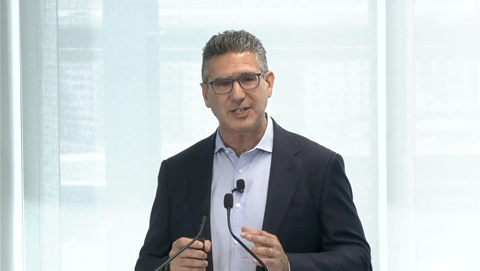A recent poll of financial services leaders revealed that only 48 percent feel confident in their ability to meet changing customer needs, while only 28 percent are confident that they can hire and retain talent in a competitive market.

The data reflects two evergreen challenges for financial services executives: preparing for the future, and securing the right talent to face it. Perhaps there is a way to address both priorities in one fell swoop.
Let’s pause on the first challenge: preparing for the future of financial services. Disruption is rampant across the industry. Client needs are evolving. Customers increasingly recognise the power of their data and take that data to different providers rather than anchoring to one bank.
New competitors are ascendant. More than 50 percent of consumers and business owners have worked with a fintech over the past 6 months or would do so in the future. And technologies like blockchain, analytics, cloud, and others are reshaping industry business models.
Multiple challenges complicate the efforts of financial services leaders to stay ahead of these trends. First, the pace of change continuously accelerates. The second issue – and this is the more difficult problem – concerns the nature of the financial services leadership role. As executives climb the ladder and accumulate greater responsibilities and control, they naturally become insulated from the firm’s end customers.
They become comfortable with existing assumptions about client needs and behaviour, and these assumptions become ingrained and reinforced by peers subject to the same dynamics. And these entrenched assumptions become the basis of growth strategies that drive huge investments in people and technology.
This is all fine until the industry shifts, often without warning. Sudden changes in customer needs, emerging new competitors, and technology developments can blindside leaders and leave the organisation scrambling to respond. This challenge is not unique to financial services. Leadership teams across industries risk becoming disconnected from the market.
To address this problem, make frontline staff your sensing mechanism. Branch and contact centre staff, commercial bankers, and wealth management advisors all have a unique perspective and immediate proximity to the market. They can sense changes in client needs and emerging new competitors faster than even the best competitive intelligence team or the most knowledgeable senior leaders who are removed from the frontline. Your frontline represents the wisdom of the crowd, and the crowd as a whole is smarter than the smartest individual in the group.
It is a happy coincidence that this approach can also help leaders address hiring and retention challenges. The new talent landscape is real and has industry leaders scrambling to retain top performers, particularly frontline staff. Although leaders have long relied informally on client-facing staff for market feedback, formalising the frontline’s role as a market sensing mechanism and advisor to senior executives is a powerful way to engage your best performers.
So how best to harness the wisdom of your frontline to keep leaders ahead of emerging competitive disruptions? Consider the following options:
- Build a “Shadow Cabinet” – designate a rotating group of mid-level and junior employees to attend executive meetings and offsites. The Cabinet’s role is to listen to executive discussions and provide contrarian input to challenge leadership assumptions when necessary.
- Allow “Flies on the Wall” – simulcast executive meetings and offsites to a broader group of employees and allow them to provide input to the discussion via comment boards, digital whiteboards, or other real-time mechanisms. This idea is similar to a Shadow Cabinet, but more broadly inclusive.
- Assign “Devil’s Advocate” Project Teams – for major strategic initiatives, assign a team of employees to work in parallel to the main project team. The Devil’s Advocate team’s job is to track the progress of the initiative, challenge the project team’s assumptions, and help them course-correct as necessary.
- Set Up a Prediction Market – launch an internal futures market to help predict business outcomes such as the success of a new product launch or the on-time completion of a major project. Allow employees at all levels to trade in the market. Prediction markets efficiently aggregate the wisdom of the crowd to stress-test leadership assumptions.
This was published from the Gartner Blog Network with permission from Gartner.




.png&h=140&w=231&c=1&s=0)



.png&w=100&c=1&s=0)

 iTnews Benchmark Security Awards 2025
iTnews Benchmark Security Awards 2025
 Digital Leadership Day Federal
Digital Leadership Day Federal
 Government Cyber Security Showcase Federal
Government Cyber Security Showcase Federal
 Government Innovation Showcase Federal
Government Innovation Showcase Federal
 Digital NSW 2025 Showcase
Digital NSW 2025 Showcase












_(1).jpg&h=140&w=231&c=1&s=0)



